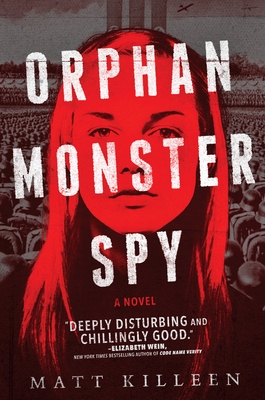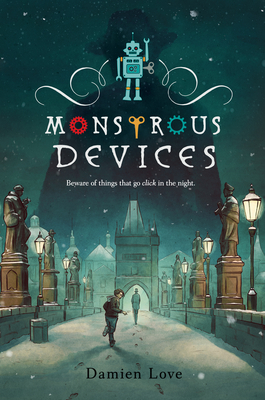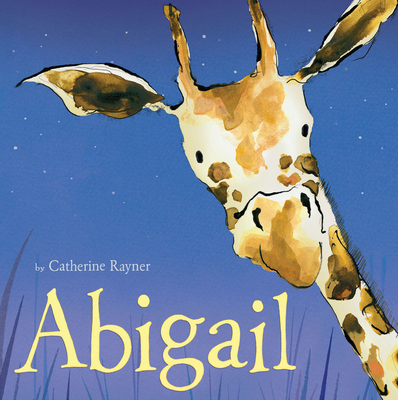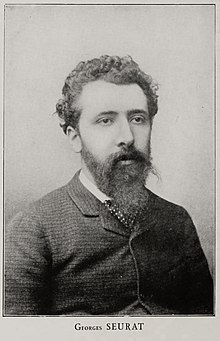Today’s post comes from an email I received from a writer friend.
I'm sharing with her permission.
I've been working on a new novel,
and I find that I'm continually battling: 1) the fear of plot-- it's not good
enough, it's boring, it's going nowhere, etc. 2) the destructive force of too
many ideas crashing down and getting mixed in my head. I often feel as though
I'm in the middle of a Seurat painting and I'm so worried and distracted by the
dots that I can't find the big picture. I try to write a synopsis and get
stuck, I try to just plow forward and often get stuck. All the while, my inner
editor is screaming at me.
I'd love your insight re: plotting.
Do you plot out twists and turns up front, or do they sometimes surprise you?
Which process works for you?
Sound familiar, writers?
 |
| "Farm Women at Work" by Georges Seurat, 1882-83 |
Plowing one’s way through the first draft of a novel can
be emotionally harrowing. (Can I inject any more agricultural metaphors
here?) Plaguing self-doubt will ride along in the cabin of your ol’ John Deere.
I’m not sure the tractor can start without it. It’s so unfair. Why must we
work alongside despair? Why do we constantly scrutinize our nascent work and
find it lacking? Why can’t we just write the next darn paragraph, without
having to grapple with questions of our story’s worthiness to exist, our
worthiness to write, or both?
I’m not sure there’s another way. Up to a point, experience
boosts one’s confidence, teaches the wizened older writer to trust the process,
ignore the harpies in her head, and get on with things.
Or maybe not.
My next novel to come out, Lovely War, a WWI drama and romance, may just be some of my very
best work. (We shall see.) As I wrote it, I kept a journal of the process. Not
a notebook for plotting ideas and character notes and whatnot, but a true
journal of my emotional health throughout. Each day’s entry began with the page
count, what was happening, and when the manuscript was due. (It was long past
due.) From there, I wrote how I was feeling about the project, and about my
ability to write it.
Each day’s journal entry was riddled with anxiety: This story is boring. The plot is
non-existent. Nothing’s happening. Everyone’s going to hate it. I can’t do it.
(Just for the record, it’s approximately my twentieth book.)
Now that it’s done, I can say with confidence that the plot
exists and that the book isn’t boring. So what was going on? Was I basking in the
pleasures of pretend-self-loathing?
I don’t think so. My worries were acute and genuine. Something
like terror was my constant companion.
The Pep Talk
When writers ask me questions like those I began with, I
want to pour out reassurance. Don’t
listen to your doubts. Just keep writing. Ignore those voices. Believe in your
story. Trust the process.
This is good counsel, for there is, quite frankly, no other
way to produce anything in this world but to keep plodding onward despite the
utter impossibility of the task and your complete ineligibility to complete it.
This is true of writing books and sculpting marble and reshaping society and
raising children.
To Plot, or to Pants:
But these aphorisms may not help much when you’re deep in the
weeds of a plot you don’t know how to fix. To outline, or not to outline?
Darned if I know. Writers on panels debate this until the cows come home.
(Farms again!) As for me, I don’t outline when drafting. I wing it. I do use a
notebook where I write some thoughts about what’s coming next, and where things
might be going, but mostly, I just write. I let wild inspiration have the first
crack at the story. Then, after I have a first draft, I outline that, and study it much more critically.
What does each chapter or scene accomplish? Do I need them all? Where do things
lose energy? Get confusing? For me, outlining a story in advance produces all
the warm fuzzy feelings of outlining a high school essay and stressing over Roman
numerals. Outlining something that already exists via spreadsheet engages my
analytical brain, after the madwoman artist has had her turn.
“Thanks, Julie,” I hear you saying through gritted teeth. “I’m
trying to get to the point where something exists. And you’re no help.”
I know. I’m sorry. Only you can do this part. But take
heart: no one says you have to do it well.
As if we weren't slightly bonkers already, then there’s this:
The Un-Pep Talk
What if the voices of doubt and criticism are right? What if the unease you feel comes
from a deeper truth – that the story you’re writing isn’t the right one? That the turns you took, some hundred miles ago,
sent you off in the wrong direction? Or that this isn’t really your story to
tell, or the story you’re best suited to tell?
This can also be true at times. Sometimes the pep talk isn’t
the answer.
The question is, how can you discern between the feelings of
self-doubt that should be ignored, and those that are trying to rescue you?
I’m not sure. I know of no solid litmus test. But here are some
questions I ask myself:
- Despite the problems, and even the loathing, do
I love it anyway? Is there, at its core, something that fills me with delight?
Or am I just clinging to this thing because I don’t know what else to write,
and/or I’m afraid I’ll never have other ideas, and/or because I feel absurdly
obligated to finish a thing once I’ve started it? I have to love it if I’m
going to see it through, even if right now I’d like to throttle it. (See kids,
above.)
- Does the story live? Does it have its own life
force, its own capacity to grow? Like the roots of a plant that keep thrusting
outward, is there something about this story that moves itself forward, that
tells you what should come next, if only occasionally, or does progress come at
a cost of brute force, most of the time?
- Or, was there a time when I loved it and it had
life, but I’ve lost that lovin’ feeling? If so, where did the story and I break
up?
If I get satisfactory answers to the first two questions, I
know I need to write the story, no matter what. Does this banish self-doubt? Hardly.
Get Out of the Way
Here’s something that can help:
Get yourself out of the way. This isn’t about you.
Accept the fact the story is daunting and you’re not equal
to the task. It’s fine to be inadequate. Join the big friendly club.
Become a servant of the work, of the story. Every day, ask
yourself, “What does this story need today? What’s the next thing?” And do
that.
This story isn’t about your human worth or how you’re just
as good as your pretty older sister or how Bozo who dumped you got it all wrong.
A successful outcome of this story won’t make God, your mother, or your best
friend love you any more or any less. It proves nothing about whether or not
you can see your goals through to the finish line, drop ten pounds, or pay your
bills.
I’ll say it again: this story has nothing to do with you. I
don’t care if it’s your memoir and you’re writing it at the prescription of
your therapist.
It’s a story. Your job is to make it a good story. You are
its employee. Be its humble servant. Nudge it along, dust it off, offer it
helpful suggestions. Give it a first draft. It will be bad. Coax that thing
into a second draft. It will be bad. Take a bold leap into the third draft. It will
be bad. That’s fine.
Don’t compare your work-in-progress manuscripts with polished,
edited novels. No writer does this job on their own. We’re each beholden to
many other smart brains who helped stir the soup, and who fished out the bones
and bay leaves.
The Big Picture
I loved this line in my writer friend’s question: “I often
feel as though I'm in the middle of a Seurat painting and I'm so worried and
distracted by the dots that I can't find the big picture.”
Ah, yes. This is one of the hardest parts about writing a
book. Even Seurat, when he wanted to, could stand back and take in the look of
his canvas as a whole. He could get a sense of its overall composition.
Novelists see only one laptop’s screen of their story at a time. A novel is a
really long thing. It’s a roll of toilet paper. Better yet, a tapeworm. We only
get to see one piece of TP at a time, one tapeworm segment. How can we know if
we’re constructing something that will be a coherent whole?
(Such as … a tapeworm? Ew. Never mind.)
For one thing, we have to take it on faith, and press
forward. But also, we have to remember that revision is the process where we
staple that tapeworm to the wall and step back to get a better look. Then we
can snip out the superfluous sections, and … Well, all metaphors fall apart ultimately.
But you get the idea. Trust the mercy of revision to fix what’s wrong. All you
have to do right now is give revision something to work with.
 |
| Couldn't stomach an actual photo. |
I think it’s freeing to think of writing more like cooking.
There’s no precise right way to make a salad or a casserole. Toss some things
together, and eat. Toss them this way or that way; it’s all the same. It’ll be
delicious. To add pepitas, or feta, or balsamic, or not, doesn’t really matter.
The fate of the world doesn’t hang in the balance. It’s just a salad. It’s just
a story. Not a rocket launch sequence. Experiment with a pinch of this or that.
Writing is more forgiving than food. You can’t easily revise the olives out of taco casserole. (How I wish you could. Yick.)
By this, I don’t mean that I don’t care or that I don’t fuss
or sweat the small stuff. But at the end of the day, we’re engaged in creative
play. Stories could go millions of possible ways. Those that get finished will
end up going one specific way, leaving behind other viable options. Just like each
night’s dinner. It’s fine.
A Pinch of Plot Advice
Here’s what I do tell aspiring writers about plot: ratchet
things up. Go from bad to worse. From embarrassing to humiliating. From scary
to terrifying. From sexy to sizzling. From tender to gooey. Whatever kind of
story you’re trying to write, make it more so, more itself, before it’s done. Escalate.
Intensify. Reconcile yourself to the fact that you must make your characters
hurt, and you must cause them to lose precious things, before the end. It’s all
right. You can make it up to them later if you must. If you’re stuck in the
middle and your plot’s run dry, ask yourself, where can I make things worse, or
more intense, for my character? Look back on what you’ve done so far and ask
yourself, where have I been protecting them? Have I created a soft world that
shelters them? Problems engage reader interest. Suffering engages reader
sympathy. Take those away, and the story’s boring.
 |
"The Scream" by Edvard Munch, 1893.
Oops. Wrong artist. |
As for that internal editor, screaming at you, lock her
in a soundproof room. No editor should scream. They should encourage, and ask
useful questions, but they only get to do so after there’s a draft. Not before.
Stuck writer, you’ve got this. (Writing ability. Not an
intestinal parasite.) Thanks for asking. Time for me now to go follow my own
advice. Or maybe, go fix myself a salad.










